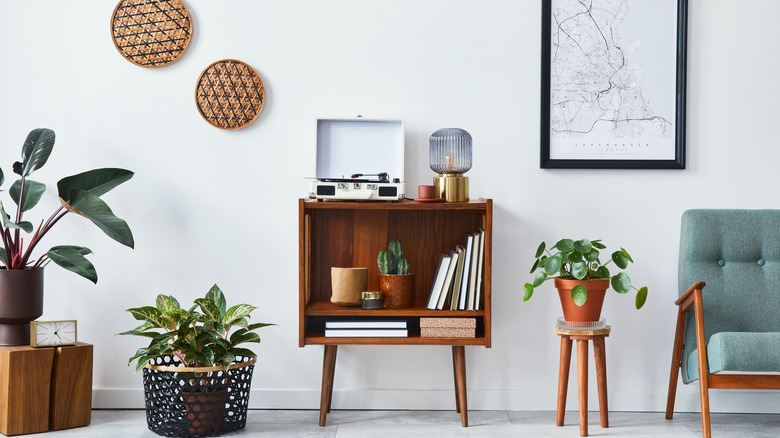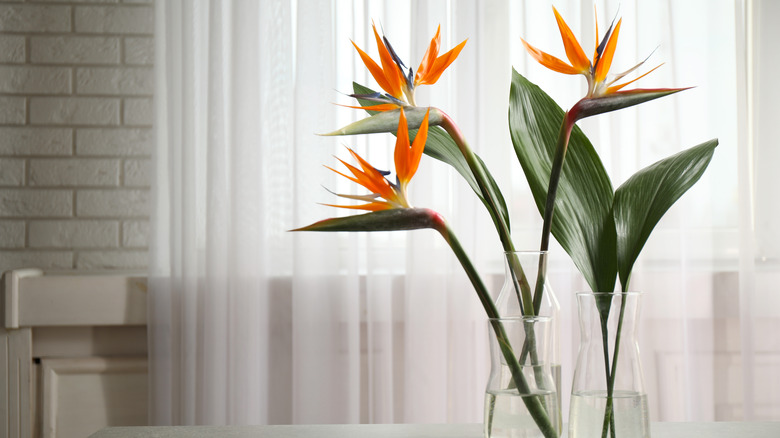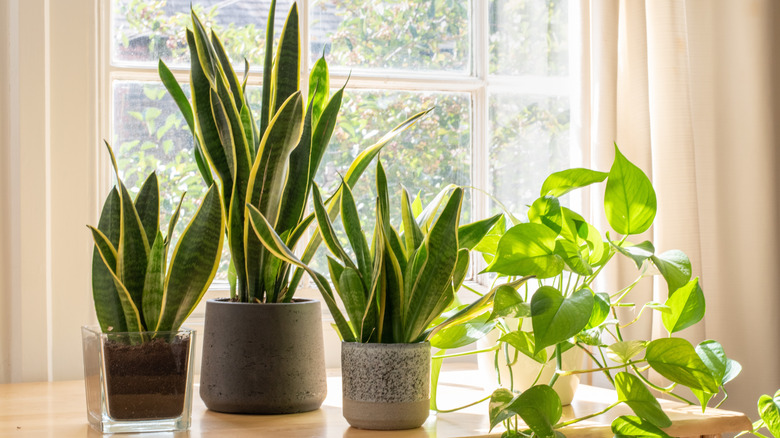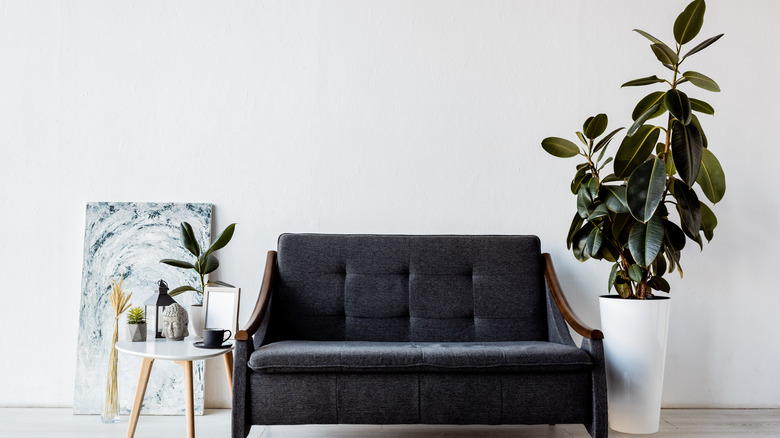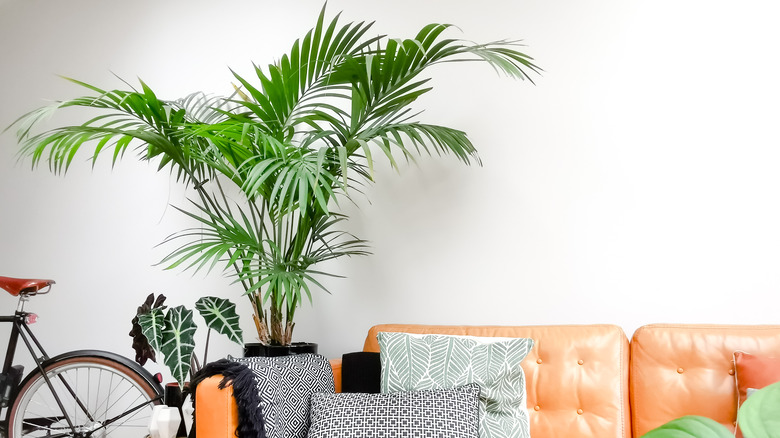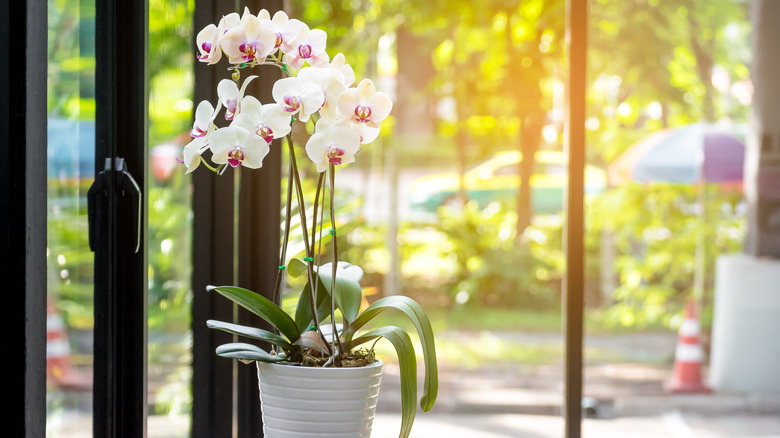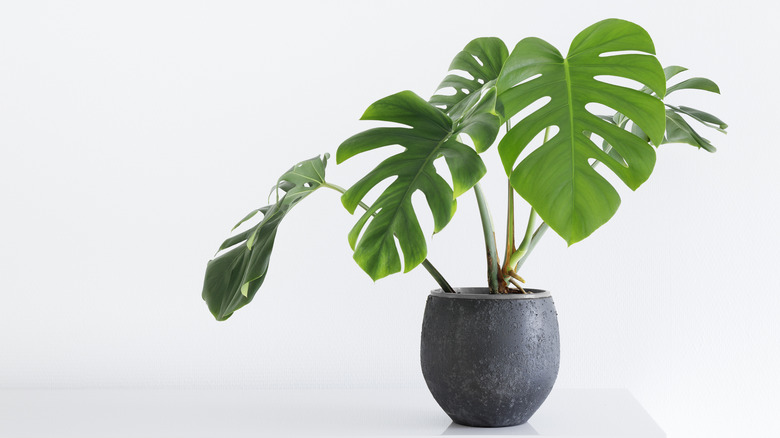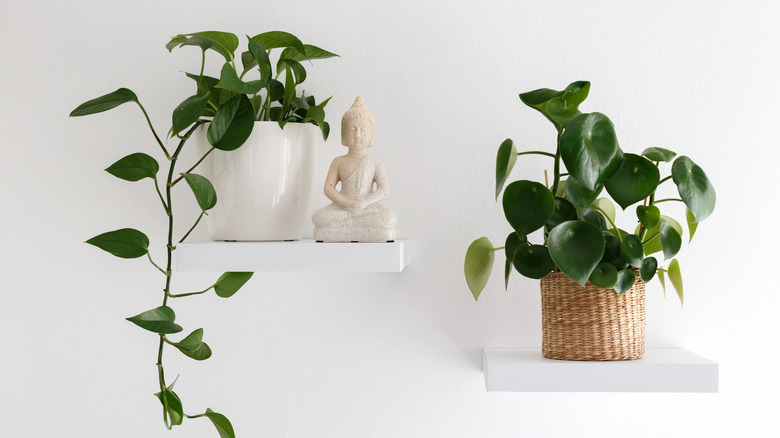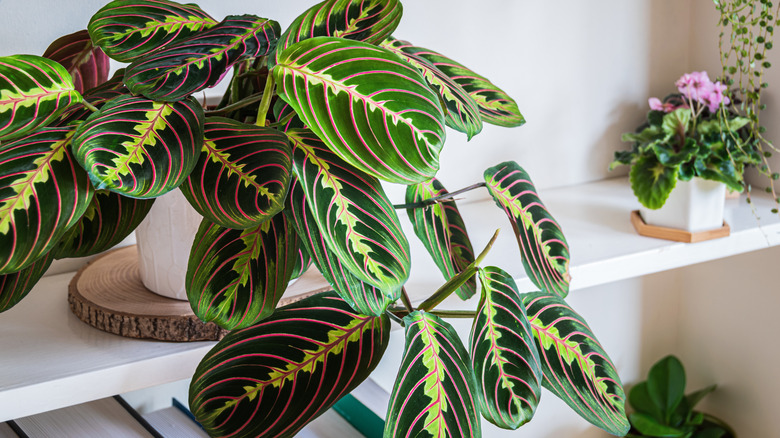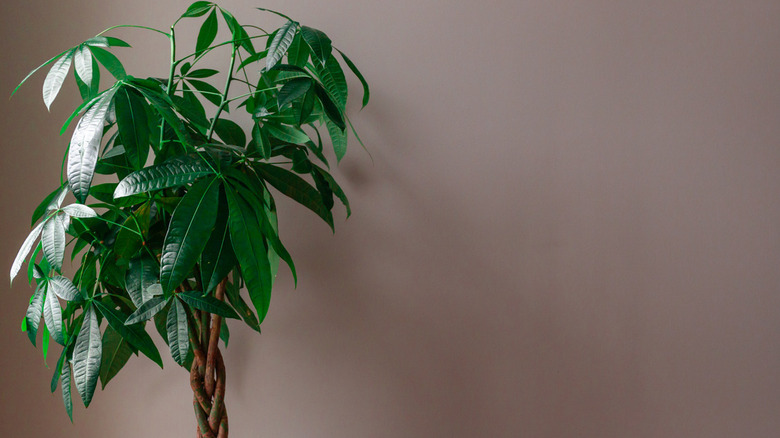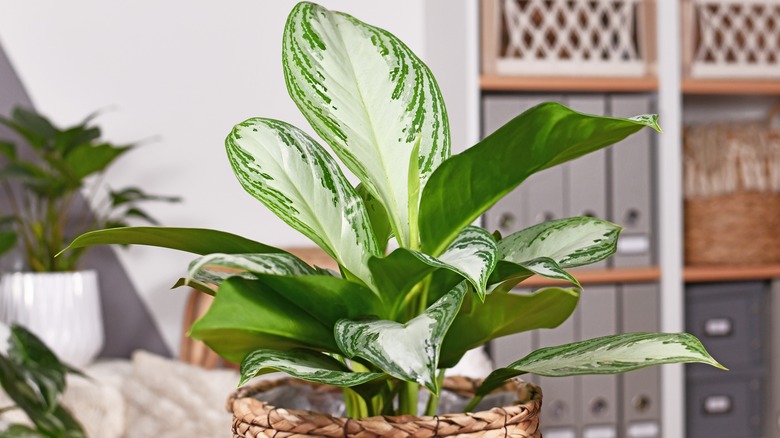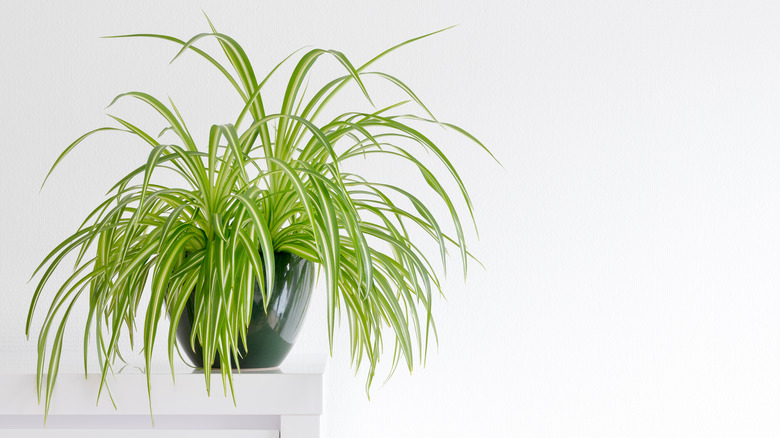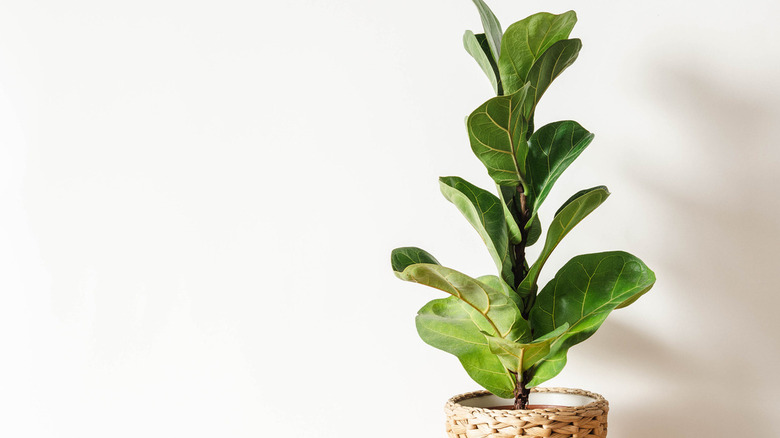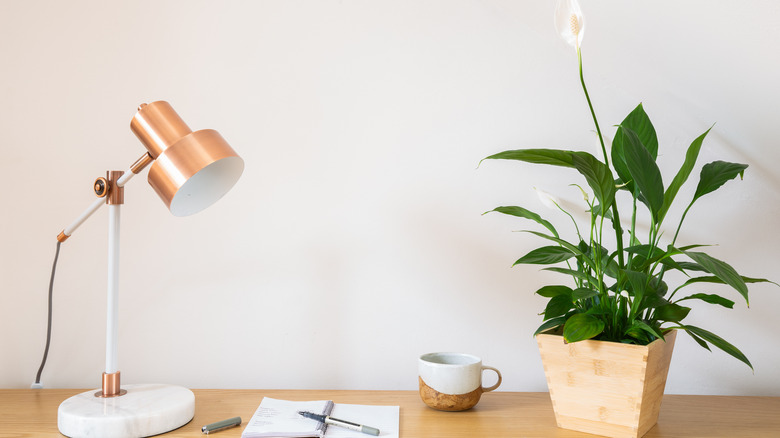The 15 Best Plants You Should Have In Your Living Room
There are plenty of ways of increasing the aesthetic appeal of your living room; it could be changing the seating arrangement, including art features, or getting new couches. While all of these options are nice, none will make your living area feel homey and inviting. You might not realize it, but plants improve the room's appeal and also bring life to any space. But that is not all; the benefits of having live plants extend further than aesthetics.
Indoor plants have proven to have mental and physical benefits when incorporated into living spaces. According to the Journal of Physiological Anthropology, houseplants boost both creativity and also relieve stress. Having said that, when one, you ought to be aware of the species' needs as far as maintenance is concerned. Since this can be quite overwhelming, especially for beginners, here are a few of our top picks that should help you get started.
1. Bird of paradise
Strelitzia reginae, commonly called the bird of paradise, is a great addition to any living room. This plant features huge glossy leaves that add a great amount of design detail to the living room's décor. Be sure to keep the soil moist for optimum growth and position this plant near a window where it can get enough sunlight (via Gardening Know How).
Bloom Season: late winter
USDA Growing Zone: 9 to 11
Soil Type: slightly organic
Size: up to 6 feet tall
2. Snake plant
Dracaena trifasciata, or the snake plant, is the perfect cultivar for a beginner. The snake plant grows into sword-like leaves that can get up to 8 feet outdoors. The long, dramatic leaves look great near the windows or against a plain white background. As mentioned, snake plants are easy to maintain; they prefer well-draining soil and just enough sunlight. Allow the soil to dry out before watering. Too much water is bad for this plant (via Healthline).
Bloom Season: hardly blooms indoors
USDA Growing Zone: 9 to 11
Soil Type: sandy
Size: 6 inches to 8 feet
3. Rubber plant
The rubber plant, also known as Ficus elastica, is a great choice, especially if you want to add moody tones to your living room. One desirable characteristic of the rubber plant is that it doesn't require a lot of maintenance. Consistently water it during the growing phase making sure the soil is dry before giving it another drink (via House Plants Expert). This plant requires bright light but not full exposure to the sun.
Bloom Season: hardly blooms
USDA Growing Zone: 10 to 12
Soil Type: acidic, well-draining
Size: 50 to 100 feet
4. Kentia palm
If you need a large indoor plant for that idle corner in your living room, the kentia palm (Howea forsteriana) might be right for you. This majestic cultivar brings tropical vibes to any living space. However, it easily adapts to any environment, making it a good choice for an indoor plant, notes Smart Garden Guide. Kentia palms can grow in most soils if they are well-draining. Also, limit the plant's direct exposure to sunlight.
Bloom Season: winter
USDA Growing Zone: 9 to 11
Soil Type: sandy and loamy
Size: up to 40 feet outdoors
5. Moth orchid
Don't let the delicate look deceive you. The moth plant (Phalaenopsis) is tougher than it appears. If well taken care of, this species will reward you with beautiful flowers lasting for several months. Although tough and hardy, this orchid variety is not drought resistant; you will need to water it at least once a week. The Gardeners' World mentions that the moth orchid requires enough light but not direct sunlight, so you should be strategic with the positioning.
Bloom Season: all year round
USDA Growing Zone: 10 to 12
Soil Type: neutral, well-draining
Size: 1 to 3 feet
6. Swiss cheese plant
Also referred to as Monstera deliciosa, the swiss cheese plant is an addition you should consider for your living room. The signature flat white split leaves and the fact that it grows moderately indoors are among the few reasons why this plant is a good houseplant. It doesn't have a lot of maintenance requirements; however, you will need to water it frequently, especially during the growing phase. In addition, Gardenista advises not to keep it under direct sunlight.
Bloom Season: mid-summer
USDA Growing Zone: 9 to 11
Soil Type: acidic to neutral
Size: 3 feet tall
7. Devil's ivy
This cascading Pothos looks great on floating shelves: The green lush brings the best of nature into the living room or home office. The devil's ivy prefers bright indirect sunlight but could also adapt to lower indoor lights (via Garden Design). It is also available in a variety of different foliage colors, perfect for any indoor décor. Use well-drained soils or potting mix and allow the soil to dry up in between watering.
Bloom Season: does not flower
USDA Growing Zone: 10 to 12
Soil Type: neutral, well-draining
Size: 20 to 40 feet long
8. Prayer plant
If you want to add a burst of color and drama to your living room, consider getting the prayer plant (Maranta leuconeura). The beautiful distinguished leaves with visible veins curl up into a prayer position during the night. Gardeners' World advises placing this species in spots with plenty of indirect sunlight. The prayer plant has no specific soil type requirement, and you should water it only when the soil is dry.
Bloom Season: hardly flowers indoors
USDA Growing Zone: 11 and 12
Soil Type: neutral, well-draining
Size: 6 to 10 inches tall
9. Braided money tree
Often considered a symbol of prosperity, the braided money tree Pachira aquatica is a nice accent to living space. Naturally, the branches do not intertwine, but you can braid them while growing for an extra visual effect. This indoor plant requires bright indirect sunlight but can also do well under medium light. Remember to water when the top soil dries up, preferably once a week, La Résidence recommends.
Bloom Season: summer but doesn't flower indoors
USDA Growing Zone: 10 to 12
Soil Type: neutral to acidic, well-draining
Size: up to 8 feet
10. Silver evergreen
The large silver or green leaves of the silver evergreen (Aglaonema commutatum) are enough to bring some life into any living room. With proper care and maintenance, this plant will spice up your living area with beautiful flowers during spring and summer. Varieties with darker leaf variations require less light than those with lighter color variations. This plant isn't picky when it comes to soil; however, you will need to keep it moist (per La Résidence).
Bloom Season: summer
USDA Growing Zone: 10 to 12
Soil Type: acidic, well-draining
Size: up to 3 feet tall
11. Spider plant
The spider plant (Chlorophytum comosum) is one of the most common indoor beauties. The long green leaves look stunning when they droop on a hanging basket or a shelf in the living room. Wisconsin Horticulture mentions that the spider plant is quite beneficial in cleaning indoor air. These cultivars love growing in partial shade because direct sunlight causes the leaves to dry up. They require moist but not soggy soil for optimal growth.
Bloom Season: flowers regularly
USDA Growing Zone: 9 to 11
Soil Type: well-draining, neutral
Size: 1 to 2 feet tall
12. Fiddle leaf fig
The fiddle leaf fig, also referred to as Ficus lyrata, is a popular indoor tree that could spice up any room. The large violin-like leaves are just perfect for creating a focal point in your living area. The fiddle leaf fig requires regular watering but be sure not to overdo it lest the plant drops its leaves. Gardener's Path mentions that this cultivar requires a lot of care, especially during the early stages of life.
Bloom Season: hardly flowers
USDA Growing Zone: 10 to 12
Soil Type: loamy, well-draining
Size: up to 10 feet tall
13. Peace lily
If you are in search of a plant that will reward you with flowers during spring or summer, then peace lily (Spathiphyllum) is for you. The shiny leaves and spoon-shaped white flowers bring much-needed vibrance into your living room. They grow slowly, reaching maturity in around three years. The Almanac mentions that the peace lily requires consistent but careful watering, the soil needs not to be over-saturated. Be sure to position the plant under bright unfiltered light.
Bloom Season: spring
USDA Growing Zone: 11 and 12
Soil Type: acidic, well-draining
Size: 16 inches tall
14. Anthurium
What most people consider as red heart-shaped flowers on the anthurium plant is a leaf, Gardener's Path notes. The bright-colored leaves will bring nature's goodness right into your living room. Anthuriums are easy to take care of with minimal care practices making them ideal for new plant parents. This species does well in moist soil conditions, bright indirect light, and loves frequent watering.
Bloom Season: flowers all year round
USDA Growing Zone: 11 to 12
Soil Type: coarse acidic potting mix
Size: 9- to 12-inch spread
15. ZZ plant
The ZZ plant (Zamioculcas zamiifolia) is a great addition to those dark spots in your living room that need styling. This is among the hardiest indoor plants you can get: It does well even when neglected for a couple of weeks without water. This species prefers bright filtered light conditions but can adapt to a low light environment. ZZ plants don't have any particular soil requirement; only water them every few weeks or so (per ProFlowers).
Bloom Season: spring
USDA Growing Zone: 9 and 10
Soil Type: neutral to acidic
Size: 3 to 4 feet tall
